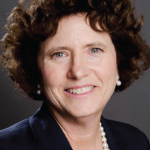 Many rheumatology researchers share concerns about the landscape for future opportunities, given recent pressures from the current presidential administration. These may make an already challenging environment even more difficult for academic physicians to successfully navigate. But many in the field will persevere despite obstacles, driven by the need to deepen understanding of these conditions and ultimately improve long-term quality of life for people with rheumatic diseases.
Many rheumatology researchers share concerns about the landscape for future opportunities, given recent pressures from the current presidential administration. These may make an already challenging environment even more difficult for academic physicians to successfully navigate. But many in the field will persevere despite obstacles, driven by the need to deepen understanding of these conditions and ultimately improve long-term quality of life for people with rheumatic diseases.
Value of Rheumatology Research
The ACR’s core mission is empowering rheumatology professionals to excel in their specialty. A key component of that is promoting efforts to continually advance the field and improve patient care. This is not possible without, among other things, new insights and guidance gleaned from high-quality research initiatives.
Ongoing Research Needs
Contrasting patient outcomes from the mid-20th century to today, it’s clear that rheumatology has made dramatic strides in improving patients’ lives and decreasing morbidity and mortality. For most patients with rheumatoid arthritis (RA), for example, gone are the days when extreme joint deformities severely limited patients’ mobility.
Kristine A. Kuhn, MD, PhD, head of the Division of Rheumatology at the University of Colorado Anschutz Medical Campus, Aurora, points out that even for rheumatic diseases that do have multiple therapies approved by the U.S. Food & Drug Administration, like RA, more research is needed. Not everyone responds adequately to these therapies, she points out, and many of these lifelong medications have undesirable side effects.
With three peer-reviewed journals in its publication portfolio, a nonprofit arm dedicated to
funding rheumatology research (i.e., the Rheumatology Research Foundation) and the vast
array of research presented in the poster hall and presentations at its annual meeting, the ACR
supports research and places a premium on its importance. ACR President Carol A. Langford, MD,
MHS, highlighted the ACR’s commitment to supporting research in the January issue, saying,
“Research represents one of the three priorities of my presidential term because of its centrality
to innovations that can improve the lives of our patients.” Learn more here and here.
Research needs are even more apparent for rheumatic diseases that have been less studied than RA, with consequently fewer approved therapies, such as spondyloarthritis. And in some rheumatic diseases, such as systemic sclerosis, some patients still die directly from their disease.
Sonali Bracken, MD, PhD, a research fellow in the Division of Rheumatology at Duke University, notes, “We’ve improved quality of life and longevity across many rheumatologic diseases, but we still have a long way to go.”



